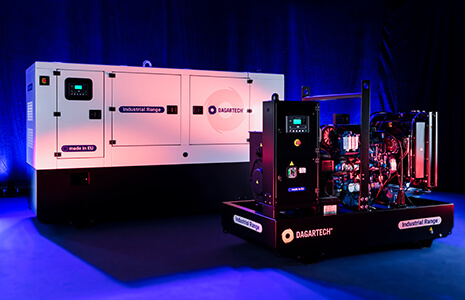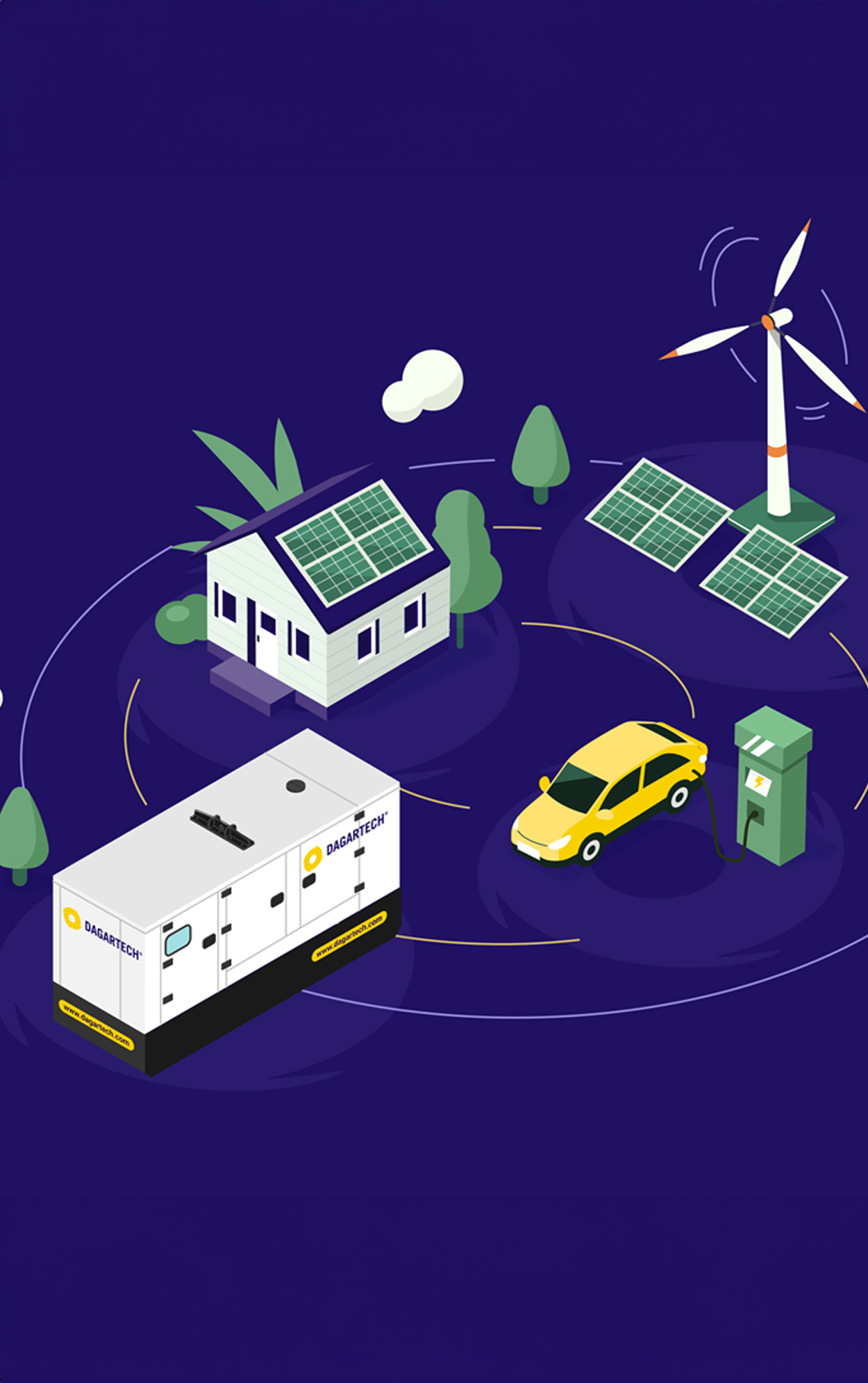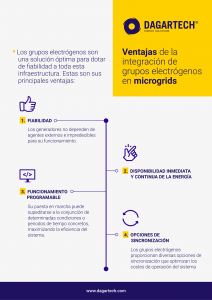- In a world transitioning toward a more sustainable energy model, microgrids are becoming prominent, forming part of important industrial projects.
- Generator sets play an essential role in microgrids, providing reliability and generating up to a third of the electricity of the system.
Electricity consumption at a global level has not stopped growing. Despite undergoing a slowdown in 2022 – caused by weakening of the economy and the significant increase in energy prices – it is expected for global electricity demand to increase in 2023 by proportions equivalent to 2022; that is, by around 2.4% (International Energy Agency, 2022, p. 6). The estimations are proposed with uncertainty, as it is still unknown how fuel prices may affect the generation mix.
This continuous growth in electricity demand is occurring at a time when society needs to transition to more sustainable energy models which are able to alleviate some of the greatest challenges of this century: climate change, depletion of fossil fuels and the increase in energy prices that we have mentioned.
We are talking about a change of cycle, where green sources of generation will take on greater specific weight and will allow us to be gradually less dependent of fossil fuels.
The generation of renewable energy is increasing more rapidly than the general energy demand in 2022. This data is certainly good news, as it leads to a slight reduction of CO2 emissions of the global energy sector, despite the increase in use of coal in Europe during the gas crisis that we are experiencing.
We also cannot forget how the industry demands energy models that are more decentralised and independent from the electrical grid. It is an industry which is at the same time progressing in its digital transformation processes. All of the above certainly constitutes a very favourable scenario for the proliferation of models in which multiple energy sources coexist, working together to create systems which are more efficient, and at the same time highly reliable.
Distributed generation and its role in the transition to a more sustainable world
In any case, we must be aware that an energy supply exclusively sustained by renewable energy sources is not viable for the time being.
We are currently, not capable of covering our full energy demand only with clean energy. Additionally, our limitation for storing extraordinary quantities of energy also prevents a 100% renewable model being possible yet.
In addition to all of the above we must add two more factors: the maximum production cycles of renewables do not always coincide with those of maximum demand, and there is not availability or access to these everywhere.
To address these circumstances, distributed generation is foreseen as a particularly viable, reliable and intelligent model.
Microgrids, an advanced model of distributed generation
Within distributed generation, microgrids are a notable model.
Microgrids are systems made up of a set of interlinked energy resources from “traditional” and renewable sources. These resources can remain connected to the grid or operate in isolation.
These hybrid systems have intelligent control, which predicts consumption and working cycles of the elements they are composed of. They also have different energy storage devices that offset energy demand.
This combined model allows us not only to enjoy the advantages of each element that makes up the microgrid, but also helps us to supplement their weak points. Ultimately, we take advantage of the best of each source and make the proposed structure robust, reliable and sustainable in the long-term, as well as presenting a more favourable cost-efficiency ratio.
The importance of generator sets int he world of microgrids
Unlike technologies based on fossil fuels, solar panels and windmills, for example, they cannot be connected at will to generate energy when this is required. This is one of its great disadvantages: as we mentioned before, its cycles of maximum production do not always coincide with the cycles of maximum energy demand.
In this scenario, generator sets are presented as an optimal solution for giving all of this infrastructure reliability. Thus, they will provide security and stability to the system, satisfying energy needs without uncertainty.
Today, up to a third of the energy provided by microgrids comes from generator sets. This figures highlight the significant specific weight that generators have in microgrid configurations. Wind energy is another third, while the rest – microturbines, solar photovoltaic panels and fuel cells – constitute the remaining third.
Image 1: The role of generator sets in microgrids.
Benefits of the implementation of generator sets in microgrids
Although reliability is the best known benefit, it is far from being the only one.
One of the most notable advantages of integrating generator sets in microgrids is the immediate availability of energy. Ultimately, we can say that they work as highly reliable energy reserves for start-up when required.
Another aspect to highlight is the capacity for planning of their operation through intelligent management systems. In this way, we can programme operating periods based on specific conditions or specific time periods, so that we can make the system more efficient, and also optimise the cost of generation.
GENERATOR SETS | |
ADVANTAGES | DISADVANTAGES |
|
|
SOLAR PHOTOVOLTAIC ENERGY | |
ADVANTAGES | DISADVANTAGES |
|
|
WIND ENERGY | |
ADVANTAGES | DISADVANTAGES |
|
|
ENERGY STORAGE SYSTEMS WITH BATTERIES (ESS) | |
ADVANTAGES | DISADVANTAGES |
|
|
*Depending on the level of emissions of the engine of the generator set.
Table 1: Advantages and disadvantages of the main energy sources available in microgrids.
Dagartech, specialists in the development and manufacture of generator sets at the cutting edge of technology
Dagartech, a Spanish company specialised in the manufacture of customised energy solutions, has increased its participation in the design and development of top quality installations that have microgrids as energy supply systems.
The high quality standards of the company ensure the development of solutions with the highest quality and reliability, offering clients and users the best experience and service possible from a team of professionals with extensive experience in the energy generation sector.




